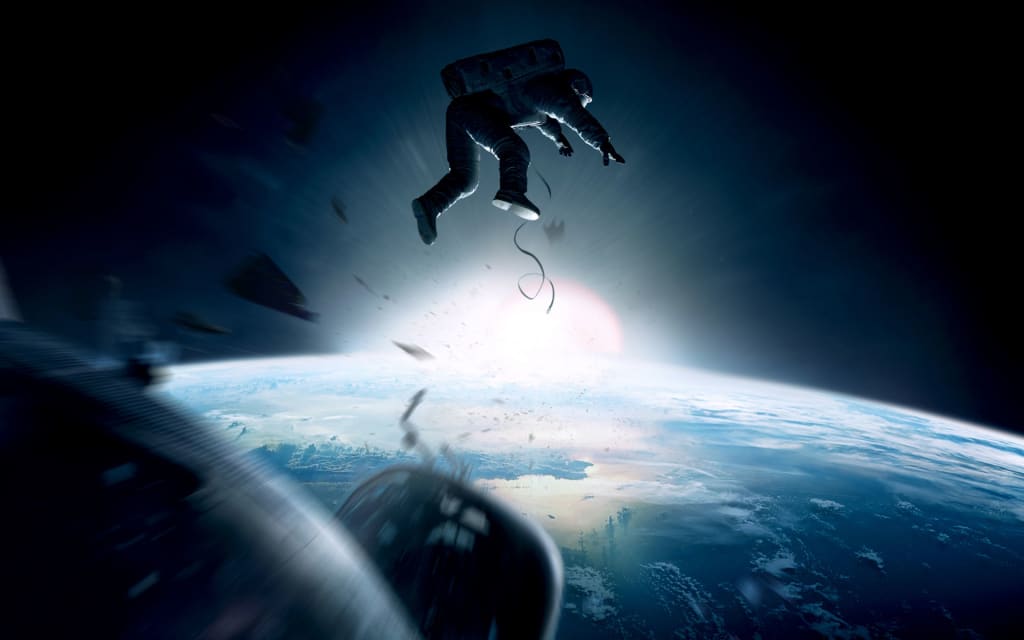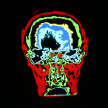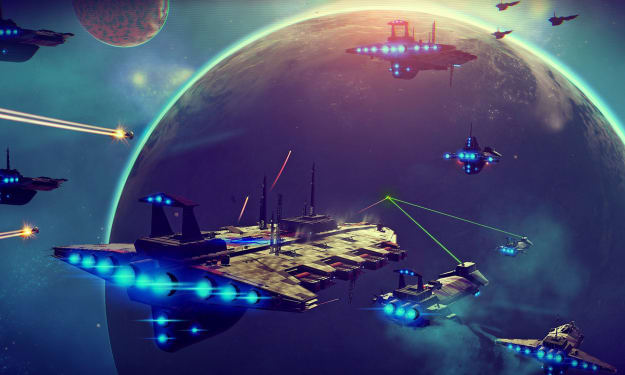How to Analyze a Science Fiction Film
Learning how to analyze a science fiction film requires suspension of disbelief and a sense of imagination.

I like to time travel, so I love science fiction. Unlike other genres of film, science fiction warrants its own criteria to be effectively evaluated. First, like any film, we measure a movie for its entertainment value: cinematography, acting, and plot (the basics). Science fiction cinema has an extra step. Audiences have to ask, is this good science fiction? The most important thing to realize when learning how to analyze a science fiction film is that qualifying as sci-fi takes more than putting actors on a stage set in space. Plenty of films purport to be science fiction but fall flat under analysis, because they fall back on fantasy or rely on absurd logic.
Imagine there is an isolated planet covered in sand dunes, where no crop can grow but it is billowing with civilization. Where do those people draw water from if it never rains? What food do they eat? Inconsistent universes fall apart, torn apart by the scrutiny of a black hole. Once one fallacy is discovered the rest fall in place. The genre is a proposition of what can happen, or it depicts possibilities in our universe based on the current limitations of science. Interstellar's black hole is an amazing rendering of what an actual black hole may look like. Christopher Nolan employed the help of physicist Kip Thorne to help him build a world from the ground-up. It was considered one of the best space travel movies, and the work that went into making it believable largely contributed to that. Thorne's book The Science of Interstellar elaborates on how just how much number-crunching was done to ensure that the film can withstand scientific scrutiny. Science fiction is meant to be the meetings of two titans of human endeavor, science and art.
Bad science fiction can still win Oscars and Academy Awards to the resounding applause of audiences around the world, such as Gravity. The film, starring Sandra Bullock and George Clooney not only lacked a coherent plot (a personal analysis not to be explored here) but failed to meet any form of scientific fact checking. What kind of astronaut insists on conversing with a colleague whose suit is quickly draining of oxygen? Answer: one who is not a real astronaut. There is also a heartfelt scene where Bullock weeps and her tears dreamily float away. There is a principle known as surface tension that causes tears to stick to your face like remnants of a PB&J sandwich in space. Yet, Gravity was called, "One of the best science fiction movies in years."

Ray Bradbury said, "I define science fiction as the art of the possible. Fantasy is the art of the impossible. Science fiction, again, is the history of ideas, and they're always ideas that work themselves out and become real and happen in the world." When the elements of a purported science fiction film fail to meet the current understanding of science, the filmmakers do a disservice to audiences everywhere. They misrepresent reality due to their laziness. The label "science fiction" ought to be held to a standard of realism that inspires audiences to learn more after seeing the film. Do not call your film science fiction because it employs time travel, and then fails to hold to any consistent logic.
Science fiction films are tied to their visual effects. While not every sci-fi film has to be a spectacle (Moon or The Man From Earth) many of them push the boundaries of special effects and cinematic possibilities. Space battles make frequent appearances in sci-fi films and can trace their routes back to the "future war" novels of the 19th century. Many such stories were written prior to the outbreak of World War I. George Griffith's The Angel of the Revolution (1892) featured "terrorists" armed with then-nonexistent arms and armor such as airships, submarines, and high explosives. The inclusion of yet-nonexistent technology became a standard part of the genre.
Fictional space warfare tends to borrow elements from naval warfare. David Weber's Honorverse series of novels portrays several "space navies" such as the Royal Manticoran Navy, which imitate themes from Napoleonic-era naval warfare. The Federation Starfleet (Star Trek), Imperial Navy (Star Wars), and Earthforce (Babylon 5) also use a naval-style rank-structure and hierarchy. The former is based on the United States Navy and the Royal Navy. Naval ship-classes such as frigate or destroyer sometimes serve as marker to show how the craft are assembled and their designed purpose.
Analyze 10 Terrifying Sci-Fi Films of the 1990's
Sci-fi horror is its own unique genre that is particularly interesting to analyze. If you are a sci-fi fan that loves a good scare and want somewhere to start learning how to analyze a science fiction film, take a look at the scariest sci-fi movies of the 90s. The US government reported that there were more alien invasions in the 1990s than any other decade. Of course, this was only in the movies. When it comes to the 10 most terrifying sci-fi horror movies of the 1990s, fans enjoyed them because they were both frightening and satisfying. The combination of fear and science fiction proved to do well in the box office, but what did it do to our minds? Movies like Deep Blue Sea made our weariness of sharks even greater, while the 1990 film Hardware, made us second guess all of the ever evolving technology that is all around us. Sci-fi horror movies have a way of making us wonder, "Could this happen to us?" which is sometimes the most terrifying of all.
Analyze 10 Sci-Fi Anime Television Shows
If you are more of a television fanatic than a movie watcher, there is still plenty of sci-fi out there for you to analyze and enjoy. Sci-fi anime tv shows, in particular, are a growing genre that has found a fanatic fanbase. Animation is a fantastic medium to portray unrealistic scenarios, so science-fiction anime is only limited by the artist and their imagination. Since World War II Japan has become one of the most scientific and technologically capable nations in the world. It only makes sense that they would produce anime which explored many of the concepts found inscience fiction. Often, the film serves as a backdrop for opening a discussion on difficult topics, such as the nature of consciousness, "war," or "artificial intelligence." Beautifully crafted worlds explore daunting philosophical issues.
Analyze the Definitions of Science Fiction
The bridge between imagination and technological advancement, where the dreamer’s vision predicts change, and foreshadows a futuristic reality. Science fiction has the ability to become “science reality.”
From Arthur C. Clarke to Douglas Adams, Isaac Asimov, and beyond, science fiction has surpassed the boundaries of the typical “genre.” With visionary predictions, technological advancements have transcended the fictional boundaries of imagination and have materialized into our daily lives. The fruition of change first starts as a simple idea, formulated in the style of a question: “What if I could fly?” “What if robots ruled the world?” “What if our world is merely a dream?” For it is man’s innate quest for knowledge that makes him ask “Why” and “What if?” With an inquisitive and curious nature, we crave to experience the unknown and the unimaginable, until we ourselves can make it imaginable – thanks to science fiction.
We encourage you to keep asking “Why?” and “What if?” Our world would not exist as it is today without the innovative minds of dreamers and scientists alike. Throughout the years, science fiction has predicted the future; maybe your idea is next. As William Shakespeare said, “We are such stuff as dreams are made on;” let us continue to dream.
Isaac Asimov, the man behind I, Robot, Bicentennial Man, and countless other works, published an essay in 1964, imagining the world in 2014 where he predicted that appliances will not have electric cords, “for they will be powered by long-lived batteries running on radioisotopes.” In a world where everyone was plugged in for energy, Asimov simply asked the question “What if we didn’t have to be plugged in?” to create a futuristic one. Significant technology is the byproduct of science bringing science fiction to reality.
One of the many predictions Star Wars offered us was the promise of a “speeder bike,” aka, the hoverbike. Even the United States Army has voiced interest in including a hoverbike into their artillery, as would be “a way to get soldiers away from ground threats by giving them a 3-D capability.” Also, they could fly. Now, the hoverbike is a feasible reality, thanks to Aero-X, which makes low-altitude flight realistic and affordable. It rides like a motorcycle, with one main difference – it can fly! Not only does this hoverbike have “fun” applications (aka, you can race your friends in the air) but it can be used for more practical applications, such as crop dusting, herd management, infrastructure mapping, and search and rescue. Aero-X has created a visionary craft usable in all fields and professions.
In Star Trek: The Next Generation, viewers were introduced to smooth, flat, touch-based control panels throughout the Enterprise-D. This touch interface was not only used in the ship’s design, but also for numerous handheld portable devices known as PADDs, or Personal Access Display Devices. The PADD is a mobile computing terminal that perhaps inspired Apple’s iPad, among other tablets. Not only that, but now the iPad features finger scanning. James Bond, anyone?
In Edward Bellamy’s 1888 utopia Looking Backward, the protagonist falls asleep in 1887 and wakes up in 2000 to find that cards are used as money. Today, credit cards are ubiquitous, and in American society, cards are preferred to cash. One of the great things about science fiction becoming reality, is that there are no limits. What comes after the card? In recent years, implanted chips have been gaining momentum in replacing credit cards, as they would be attached to your body. We’re not sure if we’re ready for a future like that just yet, but we can imagine it.
Seeing loved ones through a screen is marvel, but it seemed like a distant future to Stanley Kubrick and Arthur C. Clarke in 1968. Even though 2001: A Space Odyssey doesn’t feature any personal mobile communication devices, it does feature the “video phone booth,” where, with the correct number (to be physically dialed) you can call your loved ones back on Earth. Branded as a “Picturephone,” Dr. Heywood R. Floyd calls it a “telephone," and pulls out a credit card (like the ones we have today) for his payment. Today, video calls are ubiquitous, thanks to Skype and Facetime. Next stop, teleportation.
A Philip K. Dick book to film adaptation, The Minority Report’s depiction of touch-screen technology is being made into a reality. With many prototypes out there, and countless working virtual keyboards, many prototypes generate a private air-touch display that does not need voice activation or a physical keyboard or screen for input. As of now, goggles are needed to create the virtual display. Variations of the air touch technology are starting to appear as well, most commonly linked to the Google Glass.
Not only did the Jetsons predict the robot vacuum, but they also paved the way for automated food machines and a robotic maid. Robotic assistants were prevalent in the Jetson’s society; who’s to say our world won’t become that one day? The Jetson’s predicted a string of changes that have already occurred, personifying the concept of science fiction becoming a reality. From everyday needs to occasional luxuries, mechanical counterparts are constantly depicted in aiding mankind.
HAL 9000 represents an artificial intelligent helper who turns to the dark side. In 2001: A Space Odyssey, HAL (Heuristically Programmed Algorithmic Computer) is a sentient computer that (or, should we say, who) controls the systems of the Discovery One spacecraft. HAL speaks in a soft, calm voice, and a conversational manner. The closer the ship comes to the obelisk, the more HAL malfunctions. A.I. helpers have haunted the realm of science fiction, typically depicting negative scenarios. Thanks to Apple’s Siri, we now have a real-life HAL – well, almost. Mankind’s biggest fear in the science fiction world is the rebellion of the very machines we created (see Terminator or I, Robot). For now, Siri seems harmless. For now...
About the Creator
Futurism Staff
A team of space cadets making the most out of their time trapped on Earth. Help.






Comments
There are no comments for this story
Be the first to respond and start the conversation.